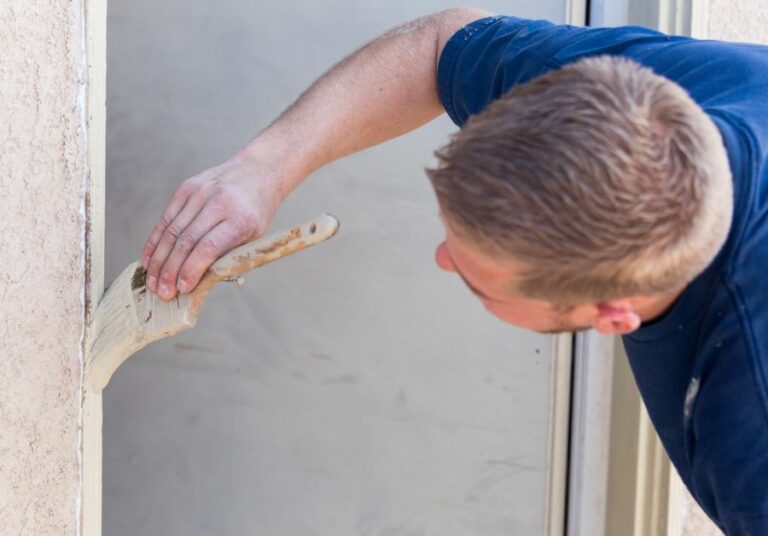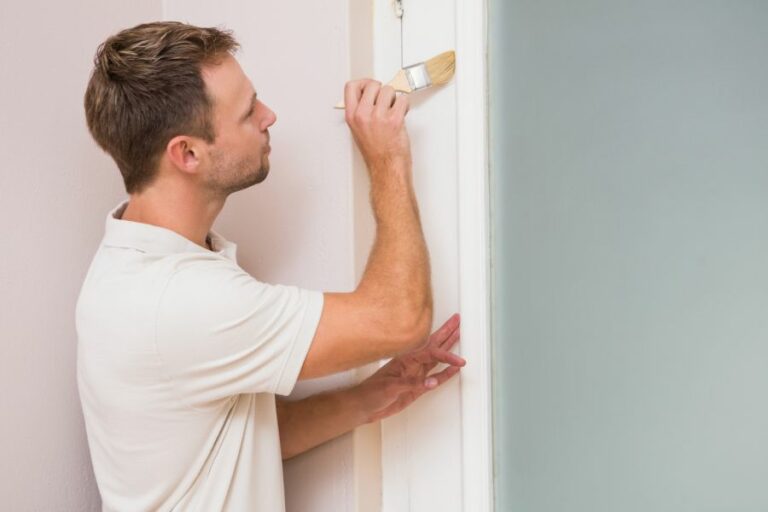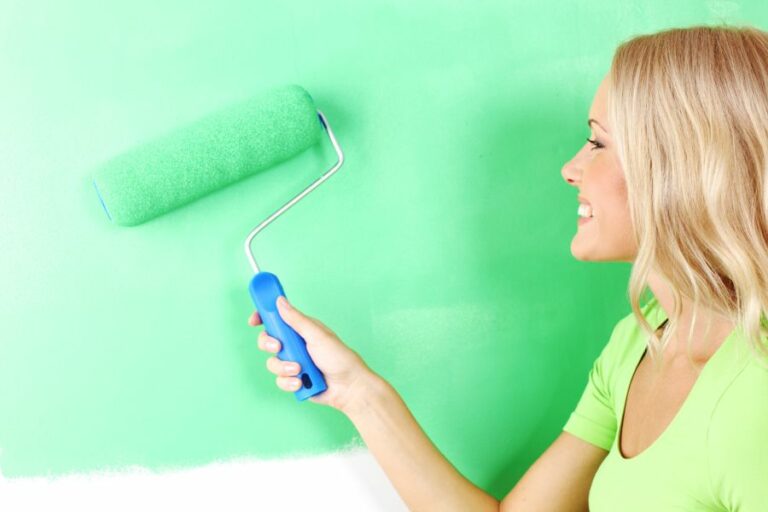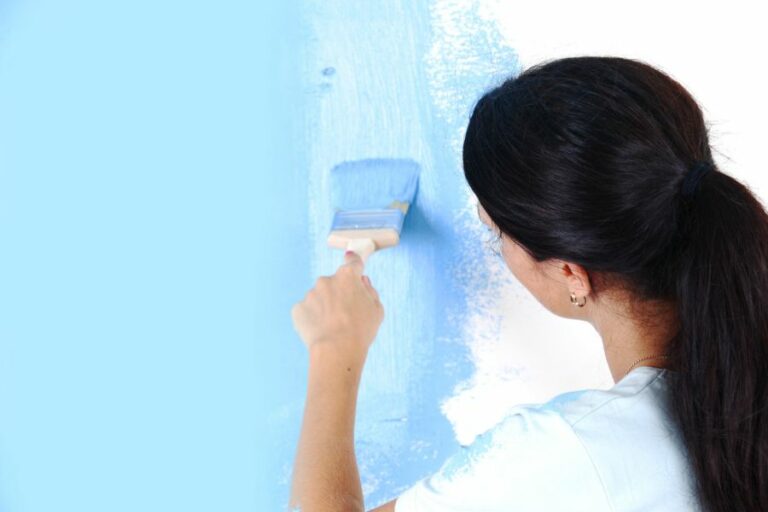What Is The Difference Between Indoor And Outdoor Paint
Are you planning a painting project but puzzled by the difference between indoor and outdoor paint? Demystify your paint selection process by diving into this informative post that will compare the unique features and applications of both types. We’ve covered everything, from durability and weather resistance to color retention factors.
Let us guide you in choosing the right paint options for your project’s needs, ensuring a vibrant and long-lasting finish. Why wait? Unlock the secrets to a successful painting experience now!
What is the difference between indoor and outdoor paint:
The key differences between indoor and outdoor paint lie in their formulation and intended use. Indoor paints have lower levels of volatile organic compounds (VOCs) for better air quality, better adhesion to interior surfaces, easier cleanup, and better color retention.
On the other hand, outdoor paints are designed for durability and weather resistance, with additives for UV protection, mold, mildew resistance, and greater flexibility to handle temperature changes. Choosing the right paint based on these factors ensures lasting, beautiful results for your home improvement project.

Discover the key differences between indoor and outdoor paint, including their unique characteristics, composition, and appropriate applications. Learn how to make informed choices for your next painting project and ensure long-lasting, professional results. Read on to become a paint-savvy pro!
Contents
- 1 Exploring the Key Differences Between Indoor and Outdoor Paint Varieties
- 2 Is it Appropriate to Use Exterior Paint for Interior Applications?
- 3 Is Special Exterior Paint Necessary for the Outside of Your House?
- 4 Exploring the Reasons Behind Exterior Paint Being More Affordable Than Interior Paint
Exploring the Key Differences Between Indoor and Outdoor Paint Varieties
When painting your home, the type of paint you choose is just as important as the color and finish. While indoor and outdoor paints may appear similar at first glance, they are formulated differently to suit the specific needs of each environment.
This article provides an overview of the key differences between indoor and outdoor paint and recommendations to help you choose the right paint for your project.
• Indoor Paint: Designed for the Interior Environment
Indoor paints, also known as interior paints, are specifically designed for the controlled environment inside your home. These paints are formulated with various additives and binders, allowing them to adhere better to surfaces, resist marks and scratches, and complement the overall interior aesthetic.
– Low VOCs for Better Air Quality
One of the primary differences between indoor and outdoor paint is the level of volatile organic compounds (VOCs) present in the formula. Indoor paints often have lower VOC levels compared to outdoor paints.
VOCs are carbon-containing compounds that easily evaporate at room temperature, contributing to air pollution and causing health issues, such as respiratory problems and headaches. Low VOC paints help maintain better indoor air quality, making them a much safer choice for your home.
– Better Adhesion to Interior Surfaces
Indoor paints are formulated with stronger binders that help them adhere to various interior surfaces, such as drywall, plaster, and wood. This ensures that the paint stays in place after it has dried, providing a durable finish resistant to cracks, peeling, and other forms of wear and tear. Choosing a paint specifically designed for interiors is essential, as outdoor paints may not adhere as well to these surfaces.
– Easier Cleanup and Stain Resistance
Interior paints are formulated to be easier to clean than their outdoor counterparts, as they are more likely to encounter common household stains and messes. Many indoor paints have built-in stain resistance, which allows you to wipe away marks or spills without damaging the paint. Additionally, indoor paints are often water-based, making them easier to clean up with soap and water than oil-based outdoor paints.
– Exceptional Sheen and Color Retention
Indoor paints are designed to hold their color and sheen over time, ensuring your walls look vibrant and fresh. They are available in various finishes, from flat and matte to semi-gloss and high-gloss. The sheen you select will affect the paint’s ability to hide imperfections and its overall durability.
• Outdoor Paint: Engineered for Exterior Conditions
Outdoor paints, also known as exterior paints, are specifically formulated to withstand the harsh conditions commonly experienced outside, such as extreme temperatures, moisture, and exposure to ultraviolet (UV) rays.
– Enhanced Durability and Weather Resistance
The primary difference between indoor and outdoor paint is its durability and resistance to the elements. Outdoor paints contain higher-quality resins, binders, and additives that help them withstand harsh outdoor conditions, including rain, snow, and sunlight. They are also formulated to be more resistant to chipping, fading, and peeling when exposed to fluctuating temperatures and humidity.
– UV Protection to Reduce Fading
The sun’s UV rays can quickly break down the pigment in paint, causing it to fade over time. Outdoor paints contain UV-resistant additives that help protect the paint from breaking down and losing its color. This ensures that the vibrant, fresh look you desire for your home’s exterior will last for years.
– Mildew and Mold Resistance
Humidity and moisture are common concerns for outdoor painting projects, as they can promote the growth of mold and mildew. Many exterior paints are formulated with mildewcides and fungicides to inhibit the growth of these organisms, keeping your home’s exterior looking clean and well-maintained.
– Greater Flexibility for Temperature Changes
Outdoor paints are formulated to expand and contract with your home’s siding as temperatures fluctuate. This flexibility maintains the paint’s integrity and helps prevent cracking and peeling due to temperature changes.
• Recommendations for Choosing the Right Paint
When selecting paint for your project, take the time to carefully consider the specific requirements of your environment, whether indoor or outdoor.
- For indoor projects, opt for low-VOC paint to help maintain a better air quality in your home.
- Look for a high-quality paint that offers good adhesion to your specific interior surface.
- Choose stain-resistant paint to make cleanup easier and ensure long-lasting results.
- Select a paint with excellent color and sheen retention to maintain a vibrant, fresh appearance.
Choose durable, weather-resistant paint designed to withstand the elements for outdoor projects.
- Look for paint with UV protection to help prevent fading due to sun exposure.
- Choose a paint resistant to mildew and mold growth to maintain a clean, healthy exterior.
- Opt for more flexible paint to handle temperature changes and maintain its integrity.
By understanding the differences between indoor and outdoor paint, you can make an informed decision and select the appropriate paint for your home improvement project, ensuring a lasting, beautiful result that will withstand the test of time.
Features | Indoor Paint | Outdoor Paint |
|---|---|---|
Chemical Composition | Low or zero volatile organic compounds (VOCs) | Higher VOC content |
Durability | Less durable to withstand mild wear and tear | More durable to withstand harsh weather conditions |
Finish Options | Flat, eggshell, satin, semi-gloss, and high-gloss | Flat, satin, semi-gloss, and gloss |
Moisture Resistance | Usually more resistant to moisture in high humidity areas | Designed to be waterproof and resistant to moisture from rain and snow |
UV Resistance | Lower UV resistance | Higher UV resistance to prevent fading and damage from sun exposure |
Usage | Ideal for interior walls, ceilings, and trim | Ideal for exterior walls, doors, window frames, and outdoor furniture |
Is it Appropriate to Use Exterior Paint for Interior Applications?
It’s a common question many homeowners and DIY enthusiasts ask: can you use paint for the outside and inside? Understanding the key differences between interior and exterior paints and their respective purposes is essential before attempting to use one for the other.
This article will cover those differences, potential problems with indoor exterior paint, and recommendations for selecting the appropriate paint for both areas.
• Understanding the Purpose of Interior and Exterior Paints
– Interior Paint Characteristics
Interior paints are specifically formulated to provide a durable, attractive finish on surfaces within the home. These surfaces can include walls, ceilings, and trim. Some unique features of interior paint include:
- A smooth, consistent finish that is easy to clean
- Resistance to common household stains and spills
- Low levels of volatile organic compounds (VOCs) for better indoor air quality
- A wide variety of colors and finishes to suit various design styles
– Exterior Paint Characteristics
On the other hand, exterior paints are designed to withstand the challenges of outdoor environments. They are meant to provide protection and longevity for a home’s exterior surfaces, such as siding, stucco, and doors. Key features of exterior paint include:
- Superior resistance to weathering and fading from sunlight
- Improved flexibility to accommodate fluctuations in temperature and humidity
- Durable enough to stand up to dirt, mold, and mildew
- Enhanced adhesion to a variety of materials, including wood, metal, and masonry
• Potential Problems when Using Exterior Paint Indoors
While it may be tempting to use leftover exterior paint for an indoor project or vice versa, there are several reasons why this is not advisable.
– Higher VOC Levels
Exterior paints often contain higher levels of VOCs compared to interior paints. Using exterior paint indoors can lead to poor indoor air quality, causing potential health issues for occupants, such as headaches, dizziness, and respiratory irritation.
Choosing low-VOC or no-VOC paints for your indoor projects is essential to ensure a healthier living environment.
– Incompatible Finishes and Aesthetics
Exterior paints are typically formulated with a higher sheen to reflect sunlight and improve durability. Using these paints indoors can result in an overly shiny or glossy finish, which may not be desirable for interior spaces.
Furthermore, exterior paint colors may not be available in the same range and variety as interior options, limiting the design choices for your indoor space.
– Drying and Curing Issues
The drying and curing process of exterior paints is often slower than interior paints. This can lead to longer wait times between coats, longer curing periods, and potential adherence issues when using exterior paint indoors. Additionally, the difference in drying time may result in uneven thickness and texture once applied, leading to an unsatisfactory finish.
• Choosing the Right Paint for Your Project
Given the differences and potential problems associated with using exterior paint indoors, selecting the appropriate paint for your specific project is essential. Follow these recommendations when shopping for paint:
– Opt for Low-VOC or No-VOC Interior Paints
Since indoor air quality is a concern when painting interior spaces, choosing low-VOC or no-VOC paints will provide a healthier environment without compromising performance. These paint options are widely available and suitable for most indoor projects.
– Consider the Desired Finish and Aesthetic
Interior paints are available in various finishes, from flat or matte to high-gloss. Consider the desired look and functionality of your painting space to determine the most suitable finish. Also, remember that a higher sheen typically offers better durability and stain resistance.
– Test Paint Colors in Your Space
Color can play a significant role in a room’s overall aesthetic and mood. Before committing to painting color, purchase small samples and paint swatches on your walls, observing them at different times of day and under various lighting conditions. Before undertaking the entire project, this will give you a true sense of how the color will look in your space.
• Final Thoughts
In conclusion, it is not recommended to use exterior paint for indoor projects or vice versa due to the differences in formulation, performance, and potential health risks. You’ll achieve a successful and long-lasting result by selecting the appropriate interior or exterior paint for your specific project, following the manufacturer’s guidelines, and considering the desired finish and color.
So, whether tackling a home improvement project yourself or working with a professional painter, remember the importance of using the correct paint products for each unique application.
| Can you use paint for outside inside? | |
|---|---|
| Outside Paint | Using the paint inside for the outside can also be problematic, as interior paints are not formulated to withstand the outdoor environment, like extreme temperatures, humidity, and UV exposure. It may result in poor performance and color fading when used outdoors. |
| Inside Paint | Using inside paint for the outside can also be problematic, as interior paints are not formulated to withstand the outdoor environment, like extreme temperatures, humidity, and UV exposure. It may result in poor performance and color fading when used outdoors. |
Is Special Exterior Paint Necessary for the Outside of Your House?
Painting the exterior of your house is a significant investment in time and money. Choosing the right paint is essential to ensure your hard work pays off with a long-lasting and beautiful finish. This article will discuss whether you need special paint for the outside of your house, the key differences between interior and exterior paint, and some expert tips for selecting the best exterior paint for your specific needs.
• Key Differences Between Interior and Exterior Paint
Before diving into the specifics of exterior paint, it’s crucial to understand the differences between interior and exterior paint formulations.
– Durability
Exterior paint is formulated to withstand harsh elements like rain, snow, sunlight, and temperature fluctuations. It contains additives that help it adhere to exterior surfaces and resist fading, chalking, and peeling. On the other hand, interior paint is not as durable since it doesn’t need to withstand the same environmental factors.
– Ultraviolet (UV) Resistance
Exposure to UV radiation from the sun can cause paint colors to fade over time. Exterior paint contains UV-resistant additives that prevent color fading and ensures the paint maintains its appearance longer.
– Expansion and Contraction
As temperatures change, surfaces can expand and contract. Exterior paint is designed to be flexible and withstand this expansion and contraction without cracking or peeling. Interior paint does not have the same level of flexibility.
– Mold and Mildew Resistance
Exterior paint is formulated to resist the growth of mold and mildew caused by moisture. This resistance is important for maintaining a clean and attractive appearance on your home’s exterior.
• Types of Exterior Paint
Now that we’ve established that you do need special paint for the outside of your house let’s discuss the different types of exterior paint available and their respective benefits.
– Acrylic Latex Paint
Acrylic latex paint is water-based and one of the most popular choices for exterior painting due to its durability, flexibility, and resistance to fading, cracking, and peeling. In addition, latex paint dries quickly, which can be advantageous when working on large painting projects.
I highly recommend using 100% acrylic latex paint for the best results. This formulation offers maximum adhesion, flexibility, and durability, leading to a longer-lasting paint job.
– Oil-Based Paint
Oil-based paint is less common for exterior use but still has its place in some applications. In general, oil-based paint is known for its excellent adhesion and ability to penetrate surfaces for a durable finish.
However, it is less flexible than latex paint, which may lead to cracks over time. In addition, oil-based paint takes longer to dry, which could be a disadvantage in unpredictable weather conditions.
One potential advantage of oil-based paint is that it may provide better coverage for certain surfaces, such as porous materials like wood. However, oil-based paint’s downsides mean I would only recommend this option if you have a specific reason for choosing it.
• Factors to Consider When Choosing Exterior Paint
To find the best exterior paint for your project, consider the following factors:
– Surface Material
The material of your home’s exterior will play a role in determining the right paint for the job. For example, acrylic latex paint suits various surfaces, including wood, vinyl, aluminum siding, masonry, and stucco. However, specific primers or surface preparation may be needed, depending on the material.
– Climate
Consider your local climate when selecting exterior paint. Look for paint products specifically designed to withstand the unique challenges of your region, such as hot sun, heavy rain, or extreme cold.
– Environmental Factors
If you live in a humid area or near the coast, choosing paint with added mildew and mold resistance is essential. For homes in areas prone to heavy pollution, look for paints with added dirt resistance or easy-to-clean formulations.
– Sheen
Exterior paint is available in various sheens, including flat, satin, and gloss. Flat paint offers a subtle, non-reflective finish that hides imperfections. However, it may be less durable and challenging to clean.
Satin and semi-gloss finishes offer a slightly more reflective appearance, are more durable, and are easier to clean. I recommend satin or semi-gloss for most exterior surfaces, as they strike a good balance between appearance and practicality.
• Conclusion
In conclusion, you need special paint for the outside of your house. Exterior paint is specifically formulated to withstand the elements and provide a durable, long-lasting finish. Acrylic latex paint is the most popular option due to its many advantages.
However, consider surface material, climate, and environmental conditions when selecting the right paint for your project. With careful planning and the proper product, you can ensure a successful and beautiful exterior paint job that lasts for years to come.
Exploring the Reasons Behind Exterior Paint Being More Affordable Than Interior Paint
As a painting professional, I often get asked why there is a noticeable difference in the price between exterior and interior paints. The difference in the price lies in the distinct formulations of these paints to cater to their specific uses.
Both types of paint have unique additives and ingredients with different proportions, impacting their properties and costs. This article will discuss various factors that make exterior paint more affordable than interior paint.
• Composition Differences
One primary factor determining the cost difference between exterior and interior paints is their composition. The chemical formula of paint affects its cost, characteristics, and performance.
– Binders
Binders are the essential components that hold the pigment particles together and create a strong bond with the surface. Interior and exterior paints utilize different binders that suit their specific requirements.
Exterior paints often use cheaper binders such as vinyl acetate or acrylic, while interior paints use higher quality binders such as 100% acrylic, resulting in more extended durability and a better finish.
I recommend opting for 100% acrylic binder in interior paints as it offers excellent adhesion, color retention, and resistance to common household chemicals.
– Pigments
The pigments in paints provide color and opacity, and their quality directly impacts the paint’s performance. High-quality pigments are more expensive, providing excellent color retention, coverage, and durability.
In contrast, lower-quality pigments might cost less but result in poorer-quality paint, which might require multiple coats to achieve the desired finish.
Exterior paints typically contain cheaper, lower-quality pigments, while interior paints use higher-quality pigments to ensure a long-lasting and visually appealing finish.
– Additives
Additives serve several purposes in paint formulations, such as enhancing their durability, improving their flow and leveling, and inhibiting mildew growth. Exterior paints require additives that protect the painted surfaces from harsh weather, sunlight, and moisture. As a result, exterior paints include inexpensive and robust additives to serve this purpose.
On the other hand, interior paints need additives that focus more on enhancing the paint’s aesthetics rather than weather resistance. This usually results in high-quality additives, which might be more expensive than exterior paints.
• Durability Requirements
While exterior paints are specifically designed to withstand harsh weather conditions, their life expectancy is generally shorter than interior paints. This is mainly due to the constant exposure to UV rays, temperature fluctuations, and precipitation that exterior paint surfaces face. Consequently, the formulation of exterior paints must be more affordable to make up for the requirement of more frequent repainting.
Interior paint surfaces are not exposed to these weathering elements and are expected to last longer. Thus, it is reasonable for interior paints to have a higher price tag due to the added emphasis on producing a more durable and appealing final result.
• Market Demand
Another factor that influences the price of exterior and interior paints is market demand. Interior paint projects are more common and frequent as homeowners often repaint their homes’ interiors to update the style and color schemes or to keep up with the latest trends.
Moreover, interior painting jobs might include various intricate details and specialized finishes, such as faux finishes, that require higher quality and potentially more expensive paints.







